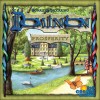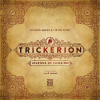
CriticalMeeple
gamer level 2
645 xp
645 xp
followers
0
0
Use my invite URL to register (this will give me kudos)
https://boardgaming.com/register/?invited_by=criticalmeeple
profile badges
...
...
...
...
recent achievements

Amateur Grader
Grade 10 more reviews or tips by clicking "Yes" or "No" in response to the question "Was this helpful?"
Grade 10 more reviews or tips by clicking "Yes" or "No" in response to the question "Was this helpful?"
I'm a Real Person
Select an avatar via the edit profile page
Select an avatar via the edit profile page

Private eye
Follow a total of 10 games
Follow a total of 10 games

Explorer - Level 1
Earn Explorer XP to level up by completing Explorer Quests
Earn Explorer XP to level up by completing Explorer Quests
Player Stats
Critic (lvl 1)
220 xp
220 xp
Explorer (lvl 1)
120 xp
120 xp
Professor (lvl 0)
20 xp
20 xp
Reporter (lvl 0)
20 xp
20 xp
About Me
In this month I'm playing:
Terraforming Mars,
Guilds of London,
Honshu,
Century,
Ave Roma.
CriticalMeeple's Followers (0)
No Followers Yet



























































































Murano
How to play
You are a glass art merchant and, on a board showing Murano and the other small islands around it, you must move from 1 to 8 gondolas, common pool available for all players, along the border to do actions. The actions available are: get money from bank, build buildings or roads, get character cards, use gondoliers, produce glass or sell it to gain money.
The twist is that each field has only action available and you cannot move the last gondolas over the others or beneath them, but you must move the other gondolas to send one in the field desired; of course, a part from the first gondolas moved, you must pay for moving the other ones.
If some actions give you money other ones give you points, you can also get extra points from character cards, that are activated by gondoliers and assigned to individual islands. The merchant with the highest points score wins the game.
Rules and Rulebook
Rules are well explained and written; it’s a very short rulebook, but take care that the last three pages are the Character Card Index; even if the text on the card is quite understandable, it could be necessary to look at the index.
How it works
The roundel moving common pool worker placement mechanism is somehow fresh: choose your own actions and at the same time have the other players in view. It’s also fluid because each turn consists only of activating one action; one the other side, in the first plays, it is possible to spend time to decide where and when place buildings: only experience will help to make the better decision.
The interaction is indirect, there is no action or card that let you block other players, and, it is good because there are enough frustration factors during the game. The bar of the game raise from family to gamers especially in the production of glass that costs victory points, a move that requires a little bit of calculation.
The judgement
Even if it is a medium light game, still the game experience is pleasant; the roundel mechanism is not easy to master but it is challenging and interesting. Be careful if the game experience of the players is different, newbies can lose with no chance to compete.